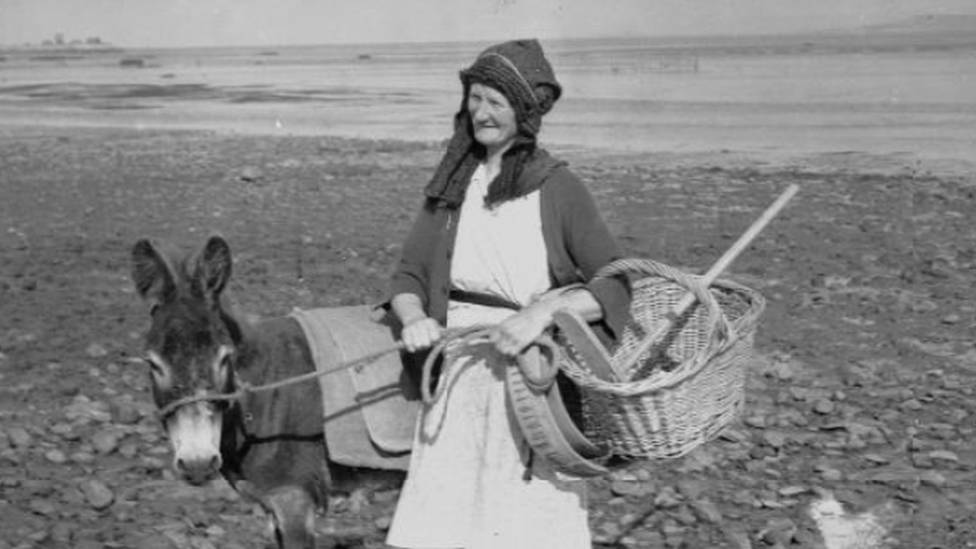Laverbread: Seaweed-loving chef's bid to promote delicacy
- Published

Jonathan Williams' love of seaweed has seen him found National Laverbread Day
In an age when we're constantly bombarded with the latest faddy super-foods, it turns out in Wales, we've been eating the best of all of them for millennia.
The Porphyra Umbilicalis species of seaweed, or laverbread as it's better known to you and I, is packed with iron, protein, iodine, vitamin C and a whole host of other minerals and antioxidants.
Harvested from coastal rocks, it is boiled for up to nine hours, then minced into a puree which honestly tastes much better than it looks.
Pembrokeshire chef Jonathan Williams - owner of Cafe Mor at The Old Point House in Angle - loves it so much that he's founded National Laverbread Day.
On Friday 14 April, over 20 cafes and restaurants across the county will pit their favourite laverbread recipes against one another, with live music and entertainment to make the day go with a swing.
Its tar-like appearance and unique texture and salty flavour may be an anathema to many Welsh people, but for those of us in south-west Wales, laverbread has played as big a part in our cultural and culinary upbringing as cawl or bara brith.
Mr Williams said: "It's such a tasty and versatile food, which is so good for you, that I just want to get the message out to the rest of Wales and beyond.
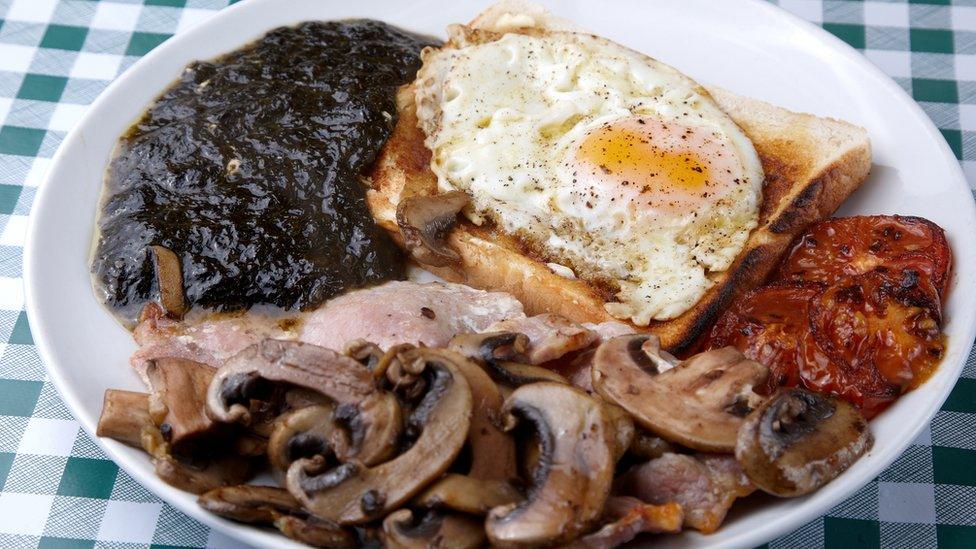
Laverbread is sometimes eaten as part of a cooked breakfast
"Around here we enjoy it on its own, with bacon and cockles, but I can see how its appearance of something you'd find in a new-born's nappy can be unappealing to the uninitiated."
But he urged people not to be put off by laverbread's dark and gloopy appearance.
"If you're cooking with laverbread for the first time, try it as part of a sauce or as a seasoning," he said.
"I use it in most of our menus. It's terrific in a stew or spaghetti Bolognese, its umami flavour will honestly lift almost any dish."
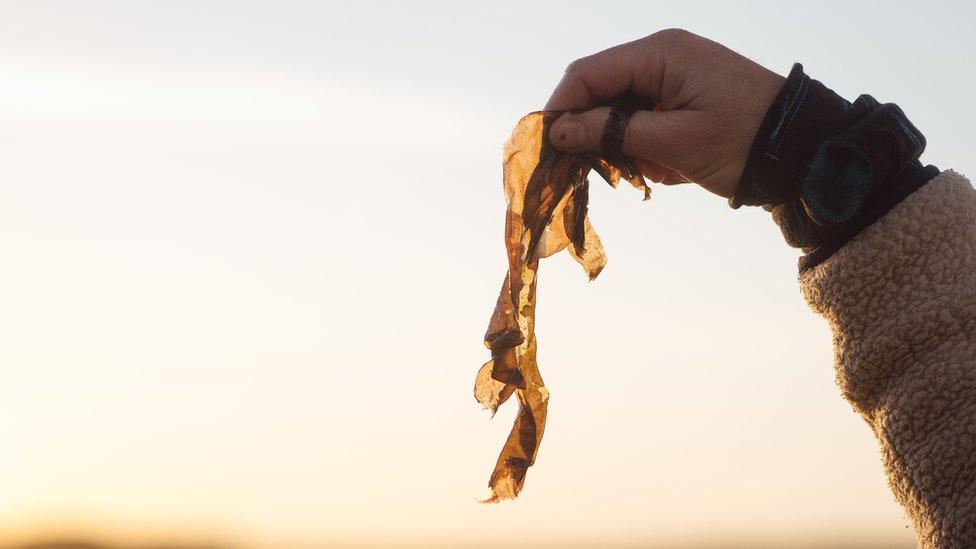
Laver is one of the most well-known seaweeds in Wales because it is used to make the traditional delicacy laverbread
Mr Williams also extols laverbread's sustainability and low environmental impact.
National Laverbread Day was launched last year, and the inaugural event attracted hundreds of visitors to laverbread tasting, a laverbread eating competition and a laverbread history exhibition.
Food historian Seren Charrington-Hollins said the delicacy has quite a history.
"From pre-written times, laverbread took on an almost mystical oral tradition in south Wales, for its healing powers," she said.
"Except we know now there's nothing mystical about it, laverbread can help to cure a whole raft of ailments, from anaemia to thyroid problems."
She explains that throughout modern history it has come in and out of fashion.
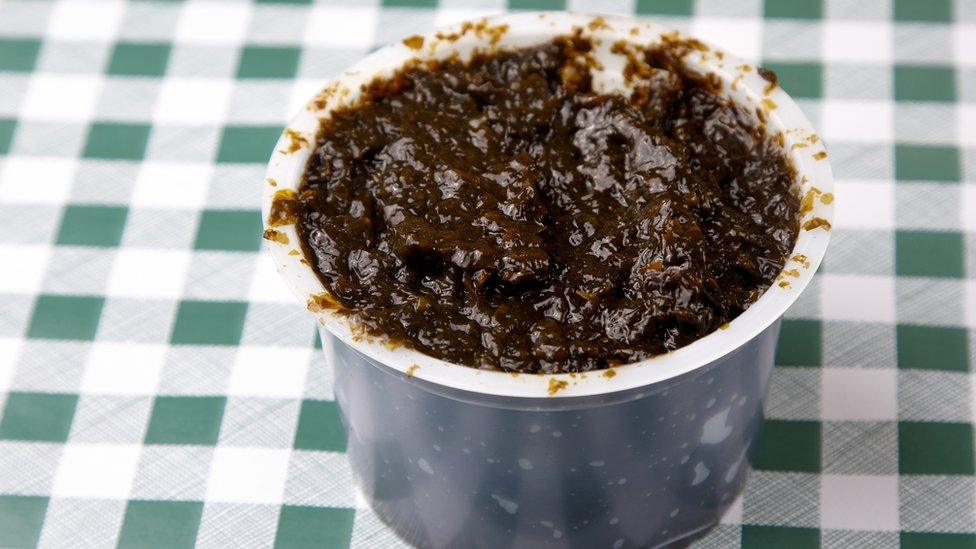
Laverbread is packed with iron, protein, iodine and vitamin C
"It seems that in times of plenty, people turn their back on laverbread but when things get politically tough - during the Norman invasion, wars of independence or the 19th Century when there were concerted attempts to eradicate the Welsh language - we rally back to it," she said.
"Whether that's out of a sense of national pride or through the necessity of hunger it's hard to say, but the fact that some of the most popular recipes involve laverbread combined with breadcrumbs or oatmeal would suggest that over the centuries it has been used to bulk out more scarce food stuffs."
Brian Jones' father Selwyn established Wales' biggest laverbread producers, Selwyn's Seafoods, in 1950.
As well as supplying cockles and other shellfish all over Europe, they produce a ton of laverbread each week from their factory in Penclawdd on the Gower Peninsular
"When Dad set up after the war, there'd already been a thriving laverbread industry on Gower for 150 years," he said.
"In the early 19th Century, doctors were investigating the disproportionate ill-health of miners in the new coalfields, and concluded that lack of sunlight and malnutrition were the primary causes.
"They ordered that laverbread, so dense in nutrients, be sent on trains and handed out to the men - not to mention women and children - working underground in the valleys."
And it worked.
"Their health improved and laverbread became a part of their identity. The only problem was that they didn't have a name for it," he said.
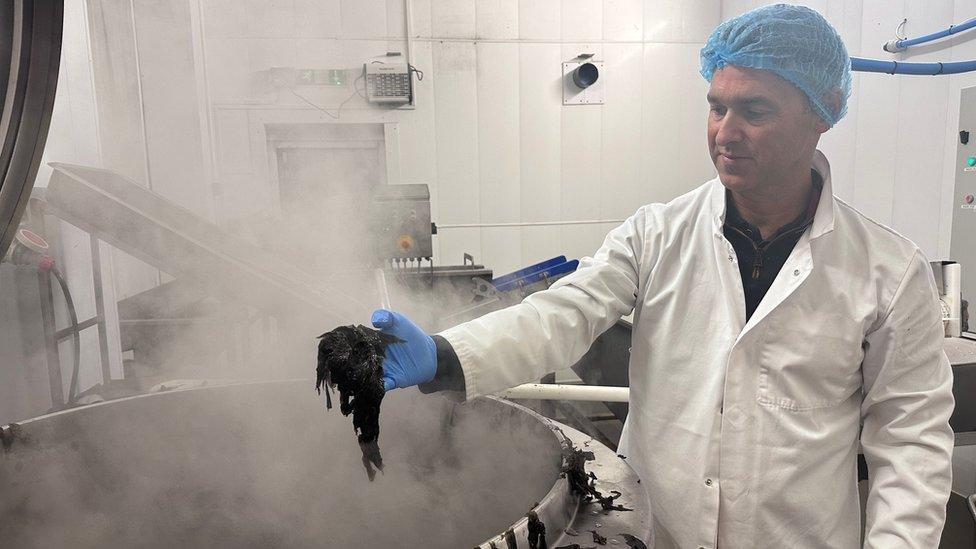
Ashley has taken over the running of Selwyn's from his father Brian
"It looked like volcanic lava, and they spread it on bread, so hence it came to be known as laverbread."
Brian's son, Ashley, has now taken over the running of Selwyn's from his father.
He explained: "We make laverbread in exactly the same way as my grandfather would have done, nothing goes into it but a pinch of salt.
"Okay, we now have a jacuzzi washer and an electric mincer - and the boilers are powered by gas rather than coal - but other than that, it's the same process of rinsing, boiling, mashing and chilling."
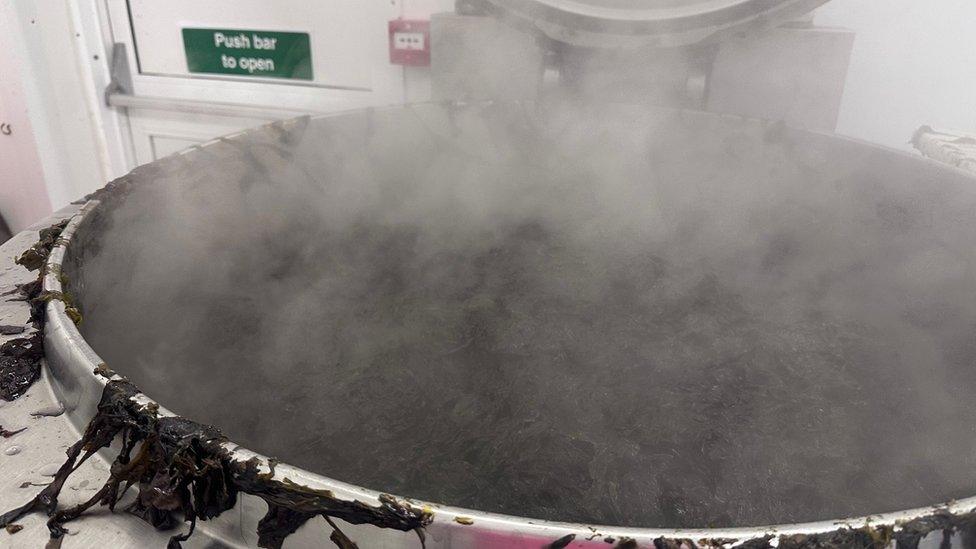
To make laverbread, the seaweed is boiled for several hours, then minced or pureed
Yet south Wales isn't the only place where seaweed is revered.
The date 14 April was chosen for National Laverbread Day in Wales as it is also the date when seaweed is celebrated in Japan.
Two-starred Michelin chef Gareth Ward runs the Ynyshir restaurant near Aberystwyth, Ceredigion, and many of his dishes are inspired by Japanese cuisine.
"The basis of almost every Japanese sauce is dashi, a stock made from seaweed," he said.
"As well as that, it's used as nori in sushi, served in salads and as a substitute for carbohydrates like pasta."
Meanwhile Ashley and his wife Kate are hoping our love-affair with laverbread continues long enough for their 12-year-old son Garan to become the fourth generation to run Selwyn's.
"We have three children, but only Garan has shown an interest in taking over when we hang up our hair nets," said Kate.
"At the moment demand is strong, but who knows how tastes will change in the future.
"Fingers crossed there'll always be a place in the market for such a sustainable and healthy food, but I hope it doesn't become so popular that the multinationals move in on our patch."
Related topics
- Published15 November 2021
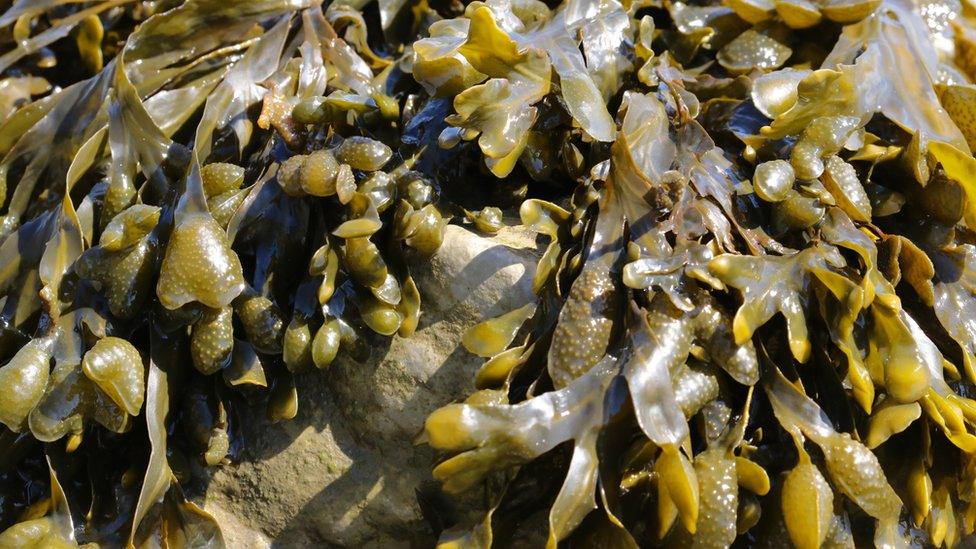
- Published15 November 2021

- Published26 March 2023
